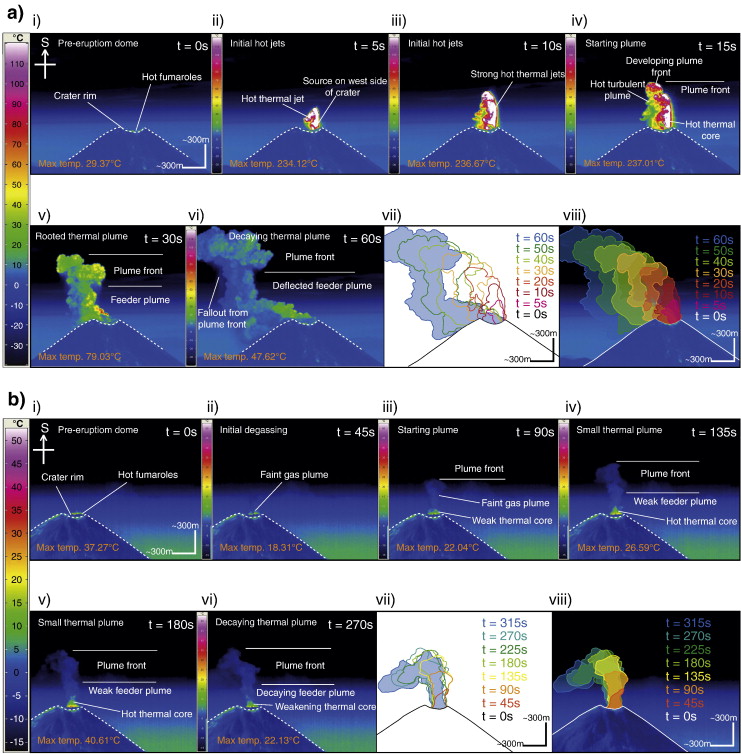
Timeseries images from thermal imaging camera of two contrasting explosion plumes at Volcán de Colima, Mexico. Image by Erica Webb, and published recently in her paper in the Journal of Volcanology and Geothermal Research.
Thermal imaging using infra-red cameras is now a widely used tool in the monitoring and analysis of volcanic explosions, and this pair of time-series snapshots of two short-lived ‘Vulcanian‘ explosions at Volcán de Colima, Mexico, shows one example of why. In each panel, times (in seconds) are times since the start of the explosion sequence; and the temperature scales (vertical colour bar) show the raw temperatures, without any atmospheric corrections. Images collected using a Jenoptic VarioCAM, from the Protección Civil de Jalisco observatory located beneath the summit of Nevado de Colima, Mexico.
Further Reading
A Harris, 2013, Thermal remote sensing of active volcanoes, a users manual. Cambridge University Press, 736pp. ISBN 9780521859455
E Webb et al., 2014, Thermal imaging and analysis of short-lived Vulcanian explosions at Volcán de Colima, Mexico, Journal of Volcanology and Geothermal Research 278-279, 132-145.

bawejachakshu
It might help us to know the conditions inside the volcano and even predict it’s eruption so that we could easily prevent any loss.
( http://www.scientificbeast.wordpress.com)
Matt Johnson
This is so very cool! Thanks for this great article, and blog overall! 🙂
Eric Stephens
Nice Information .. Thanks for sharing 🙂